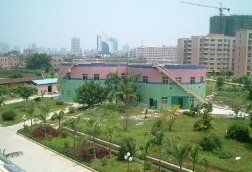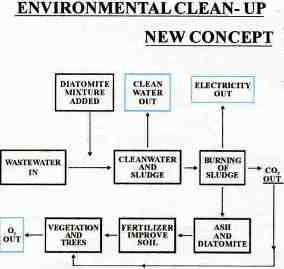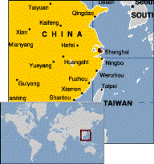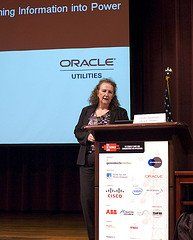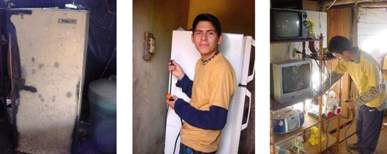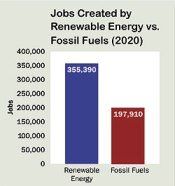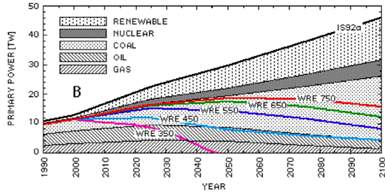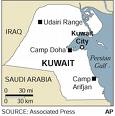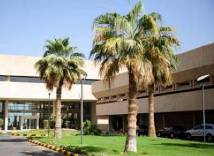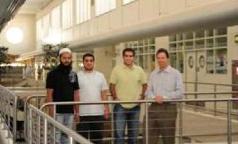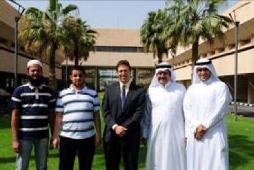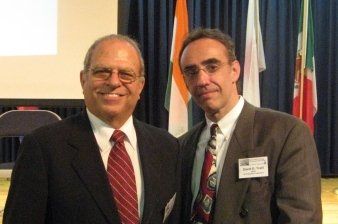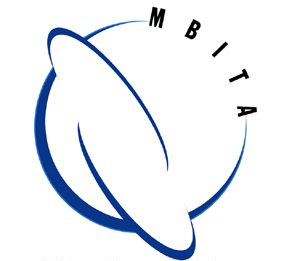MBITA's Cleantech Viewpoint
UPDATE
2010 begins with a renewed environment of economic growth and positive programs for the world economy. This first issue of the World TradeWinds eZine for 2010 features a new section called ‘MBITA’s Cleantech Viewpoint’ where we will monitor the explosive ‘cleantech’ and ‘smart energy’ industries and the great opportunities that exist for our Green SMEs in the global marketplace. Also, please read about our upcoming Green Trade Mission to China in May of 2010… The global economy looks much brighter than it did a year ago and we wish you the best of luck in your global trade initiatives for 2010.
New Paragraph
President
Tony Livoti
MBITA
Vice President
Shay Adams
AIM Medical Sales
Members
Dr. Edward Valeau
Els Group LLC
Hartnell College
President Emeritus
Marcelo Siero
IdeasSiero
Jim Faith
Trade Export
Finance Online
(TEFO)
Cristina Polesel
MBITA
General Manager
This newsletter has been
created by MBITA's editor
Cristina Polesel
cristina@mbita.org
MBITA New Member
MBITA welcomes new member Clearwater Environmental Services Inc. (CES). CES is an US registered company specializing in environmental related projects.
Mr. Wing Yip Young, founder and president of the company, is also the patent holder of the world’s most advanced, state-of-the-art CES wastewater treatment technology.
CES can clean up all municipal sewage and most industry wastewater 20 times faster and achieve better clean water output. It cost less to build and run, it’s easier to operate and simpler to maintain than all other current wastewater treatment plants in the world.
The CES treatment system uses 50% less energy to operate and produces additional energy during the operation cycle. CES also eliminates the sewage sludge 2nd contamination process by producing electricity, liquid gas and fertilizer to then be recycled back into the city’s waste management system.
CES offers a TOTAL, ENVIRONMENTAL FRIENDLY, WASTEWATER CLEAN UP system at an affordable price. CES can design, build and operate all different sized waste treatment plants. CES also monitors the plant operation and assists clients in solving any subsequent problems that may arise after turning it over to the client. CES can save municipalities millions of dollars a year with just one waste treatment plant’s operation costs.
Wing Y. Young
President
Clearwater Environmental Services Inc.
Tel. 415-812-8090
Web: www.ceswater.com
email: ceswater@yahoo.com
China Trade Mission, May 2010
MBITA in partnership with Asia Getaway Inc. are now accepting delegates for an upcoming trade mission to China for ‘cleantech’ and ‘smart energy’ companies.
This trade mission will take place from May 22-29th and will include one-on-one meeting with qualified and selected Chinese partners in Shanghai and in the Hunan and Jiangsu provinces. An additional day will include a tour at the World Expo 2010 in Shanghai where over 186 countries and 70 million people will visit over a period of months.
“This trade mission is designed for ‘deal-making’. That’s why we are providing web conference sessions between our delegates and their prospective and qualified Chinese partners prior to their in-country visits so our delegates will ‘hit the ground running’ when they meet in China with their prospective and qualified partners”, states Tony Livoti.
For more details and registration please visit www.mbita.org/chinatrademission/asiagetaway.pdf
The ‘Cleantech’ Viewpoint is a new section for the World TradeWinds eZine designed to follow the industrial ‘boom’ now occurring throughout the world in the ‘cleantech’ and ‘smart energy’ industries.
The 'Smart Energy' Revolution Takes the Stage in San Francisco, CA
By Tony Livoti, MBITA President
Always taking the global perspective to industry I realized that this could be bigger than the internet because the ‘smart energy’ revolution is not just happening in the U.S., it’s happening all over the world, all at once.
As developed and some underdeveloped countries scramble to meet mandated carbon emission targets with new renewable energy sources, I realized that this ‘smart energy’ revolution is being besieged by innovation from businesses of all sizes, from all part of the world, and it’s because of the internet.
Remember back in 1994 when the internet was being introduced to the business world primarily starting in Silicon Valley and then expanding to other parts of the country and then finally reaching Europe and Asia. This process took a few years to mature because the internet was not as effective as it is today with the emergence of pervasive broadband and visual, real-time, information sharing. Now when the latest technology in ‘smart energy’ enters the global stage, the whole world knows about it and reacts accordingly. The brightest minds are inventing the brightest ideas in smart energy, and these bright ideas become even brighter as other bright minds improve upon them, exponentially forming a global snowball of innovation…what an interesting time to be alive.
Some of the topics covered at the conference included energy storage, home energy management, plug-in vehicle charging systems and even an ‘eco-warrior’ game connecting conservation to virtual rewards. You can see videos and read detailed articles on the ‘smart grid’ at Greentechmedia.com, who were the producers of The Networked Grid conference.
As a believer in Global warming, I left the conference energized and hopeful that this daunting challenge our generation and our children’s generation face to save our planet is being met in spades by the best humanity has to offer.
Arriving university students will be completely immersed in the community of San Cristobal, taking part in an intra-cultural exchange while helping to move the world heritage site of the Galapagos closer to independent sustainable use of electricity.
An initial orientation for arriving students and faculty about the Galapagos and the issues faced here (economic, social, political) is a fundamental part of the term of study along with an experience that is close to or equivocates the experience of visitors here.
Come To Galapagos, LLC, a locally owned and operated tour company with close government and community ties, has been working toward the creation of a sustainable economic model for years and has volunteered their services for not only this initial orientation, but also in the coordination of home stays, hotels and flights from the continent and overall general care of arriving students and/or faculty.
This electricity is provided entirely (on every island except San Cristobal where we have wind turbines that augment this at an estimated 40% year round, far less during the hot months when there is less wind and greater demand, and on Floreana, with solar panels and aging batteries supporting a population of 85) by diesel generators. The fossil fuels to run these generators need to be imported and while Ecuador is a petroleum producing nation, we have no refinery. The crude gets shipped to Venezuela and refined petroleum products are shipped back to Ecuador and finally to the Galapagos. Even with the government’s subsidies a viable alternative can be presented to the local populace with “Bioclimatic Design”.
Who wants to help us help them?
For more details visit www.galapagosolar.com
Ron Swenson
SolarQuest
P O Box 7080
Santa Cruz, CA 95061
Tel: 831-425-8523
E-mail: rbs@ecotopia.com
Web site: www.solarquest.com
See Ron Swenson's bio at www.swenson.com/ron
Opportunities in Renewable Energy and their Role in Solving Urgent Environmental and Economic Needs
By Dr. Michael Woodhouse
A projection of the Global Energy Mix and CO2 concentrations as a function of that mix for the 21st century. Capping CO2 levels (in ppm) at the indicated limits implies that the area between the corresponding colored line and the total primary power production curve (labeled 1S92a) come from carbon-free sources. The model was derived by authors with last names beginning in W, R, and E.
- Reprinted from M. Hoffert et al, Science.
The risk with sticking to the known systems becomes clear when considering how to contain CO2 concentrations to certain levels. In the pre-industrial epoch of human history, global CO2 concentrations were roughly constant at 280 ppm. In 2009 that level is 390 ppm. Climate scientists generally regard the 450-550 ppm level as the upper limit to avoiding a catastrophic failure in our climate system. In order to stay below that limit by 2050 would require a variety of forms of carbon-free power being output at a level roughly equivalent to all power that is produced today (represented as the area shown by the “Renewable” and “Nuclear” pieces PLUS the area within “Coal” to achieve the baseline CO2 concentration).
Contact:
Dr. Michael Woodhouse
Energy Technologies and Market Analyst
ARI International
Tel: 970-402-5912
E-mail: photoelectrolysis@gmail.com
The plan is to enable a full remote-control access to the HVAC split units, packaged units, and all of the lighting circuits. The initial implementation phase will start with active scheduling of the equipment runtime based upon the known schedule of the schools.
Further special event schedules will be added as the system grows. Additionally, each school will have sub-meters on each of the main power feeds into the building to help further the research into energy savings.
“The successful implementation of this project will lead to a reduction of 24 MWh in national peak electrical demand and 94 MWh in daily energy consumption for typical summer days. The expected financial and environmental benefits from these savings are KWD 11.8 million (US$41 million) towards power generation and distribution costs, in addition to KWD 1,740 per day (US$6069) in fuel cost and 61 tons per day reductions in CO2 emissions for typical summer days. These benefits strongly justify the proposed budget for this project,” commented Dr. Al-Mulla.
With an initial investment of approximately KWD 1.3 million (US$5 million) for the 102 schools, upon completion, the projected ROI is roughly three months.
This unique opportunity is expected to pave the way for hundreds of other government managed buildings in the country during Phase 3 of the project. KISR has set the goal that this project becomes a model program for other countries in the region. As a division of the Kuwaiti government, KISR is a scientific research laboratory working on real-world problems for Kuwait and expects to share its knowledge with others that could benefit.
Contact:
Ron Bernstein
Executive Director, LonMark International
Web site: www.lonmark.org
E-mail: info@lonmark.org
The ‘Global Smart Energy- Bilateral Trade and Investment Opportunities’ conference on November 13, 2009 at the Monterey Institute of International Studies (MIIS) in Monterey, Ca was a great success.
The event featured energy experts from NASA JPL, Chevron Energy Service (CES) and a host of other cutting edge ‘smart energy’ experts from small business sectors discussing the challenges and business opportunities that all Cleantech companies face here and abroad in the booming ‘smart energy’ industry.
Global trade and investment opportunities in Smart Grid products and services were addressed as well as the emergence of Local Smart Micro Grids and the importance of how international standards fit into the new global energy infrastructures occurring throughout the world.
Ayse's Corner
Ayse's Corner is a feature column of the World TradeWinds eZine'. Ayse Oge is a published author and global trade marketing expert and author of Emerging Markets.
Brazil: Emerging Player in Global Stage
by Ayse Oge
The International Olympic Committee’s choice to have Brazil host the 2016 summer games paves the way for tremendous opportunity in expanding the Olympic spirit, by Brazil becoming a global player in international trade.
With a population close to 200 million and a landmass similar to the U.S., Brazil has the largest and the most complex market in Latin America. Some facts about Brazil:
- Brazil’s economy is expected to grow by 4% to 6% every year. According to a forecast released by the International Monetary Fund, the country is at the forefront in taking Latin America out of its recession.
- Brazil’s economy benefits largely from the robust demand for its iron, timber, and crops such as sugar cane and soybean. The discovery of new oil reserves is expected to make the country a potential energy exporter in 2012.
- Brazil’s manufacturing, retail and service industries have a healthy growth pattern. The country’s large consumer base has an appetite for a wide range of tastes.
- Foreign investment in factories and offices has been increasing lately despite the global recession.
- The country is reaping the rewards of recent years of conservative economic planning.
Brazil’s market challenges include uneven income distribution, high unemployment rates and a commodity-driven and largely informal economy. U.S. exporters need to know the domestic environment, including both the explicit and implicit costs of doing business in Brazil (referred to as “Custo Brasil”). Such costs involve distribution, government procedures, employee benefits, environmental laws, and different tax calculations. Logistics are a particular challenge, due to the fragmented nature of distribution channels.
Potential market opportunities for U.S. exports and investment include: Agricultural Equipment, Agriculture, Aircraft and Parts, Airports, Computer Software, E-Commerce, Highways, Insurance, Iron and Steel, IT Hardware, Medical Equipment, Mining, Oil and Gas, Pharmaceuticals, Pollution Equipment, Ports, Railroads, Safety & Equipment, Telecommunications and Tourism.
The U.S. Department of Commerce’s website provides comprehensive data on Brazil’s market opportunities for U.S. exporters. It can be accessed at:
http://www.focusbrazil.org.br/ccg/PDFs/ccg_all_in_one.pdf
You can get further information from the officials through the Brazilian Consulate in Los Angeles:
Setor Comercial
trade@brazilian-consulate.org
Contacts at the Consulate are:
Edna R. Shelby
Raquel B. Davies
Walter Leao
Ayse Oge is President of Ultimate Trade, International Trade Consultant, Speaker, Trainer and can be reached at oge@earthlink.net
www.goglobaltowin.com
Ayse Oge is President of Ultimate Trade, International Trade Consulting, Speaking and Training. She is also Board Member of California Business Education Association.
Ayse Oge
President
Ultimate Trade LLC
Tel. 818-708-9571
Email: oge@earthlink.net
Web: www.goglobaltowin.com
Have a Green product, service or technology?
Sign up for a membership in GreenTradeNetwork.com
With a focus on global trade industry companies and professionals, the MBITA Global Jobs Center offers its members—and the industry at large—an easy-to-use and highly targeted resource for online employment connections in global trade.
Both members and non-members can use the MBITA Career Center to reach qualified candidates. Employers can post jobs online, search for qualified candidates based on specific job criteria, and create an online resume agent to email qualified candidates daily. They also benefit from online reporting that provides job activity statistics.
For job seekers, the MBITA Career Center is a free service that provides access to employers and jobs in the global trade industry. In addition to posting their resumes, job seekers can browse and view available jobs based on their criteria and save those jobs for later review if they choose.
Job seekers can also create a search agent to provide email notifications of jobs that match their criteria.
Sponsors, Partners, & Affiliates



